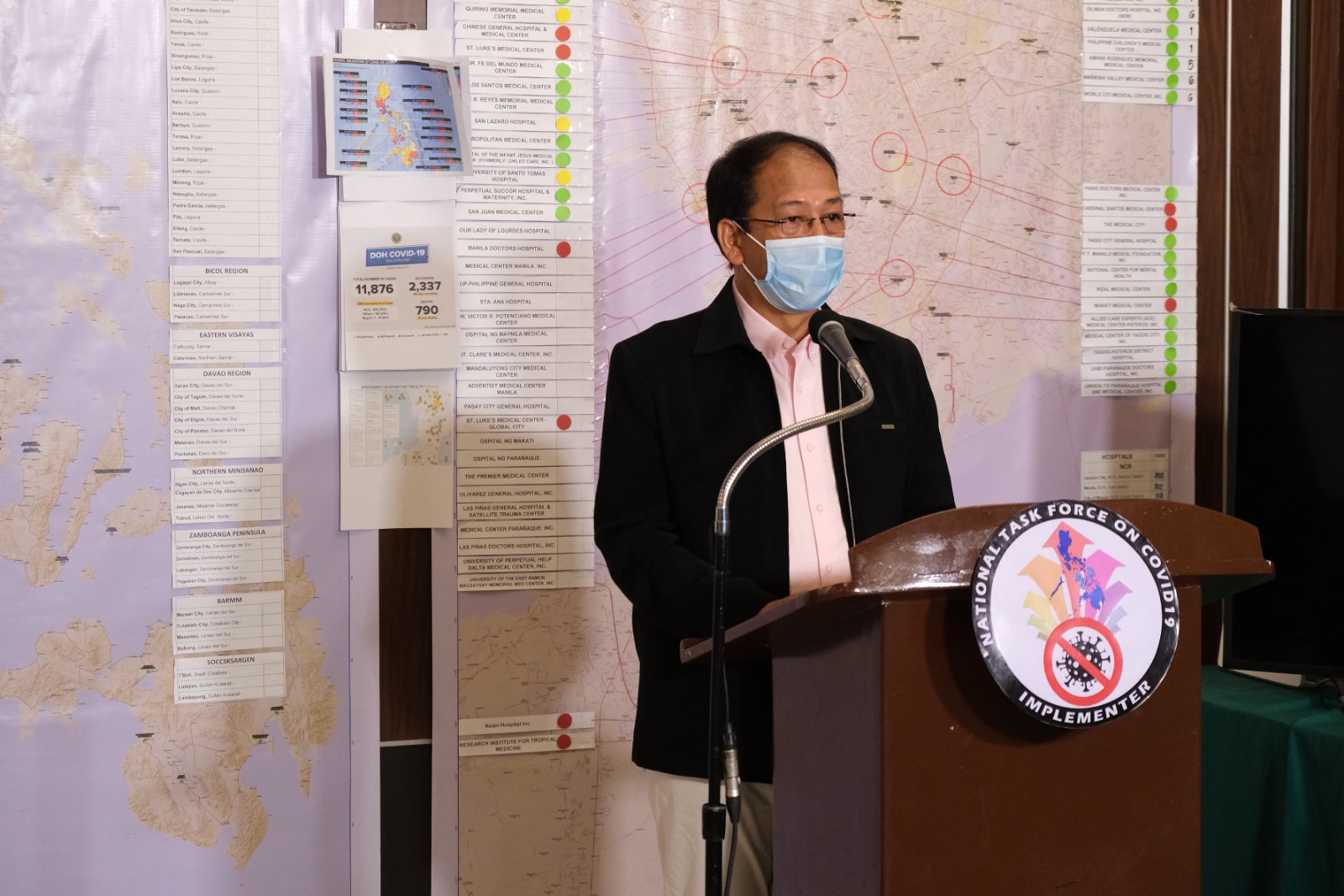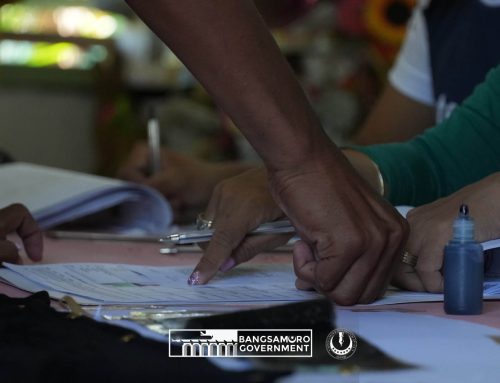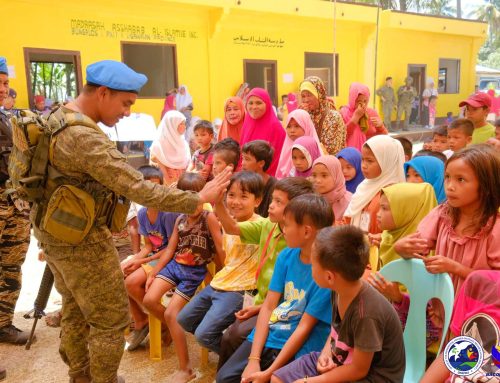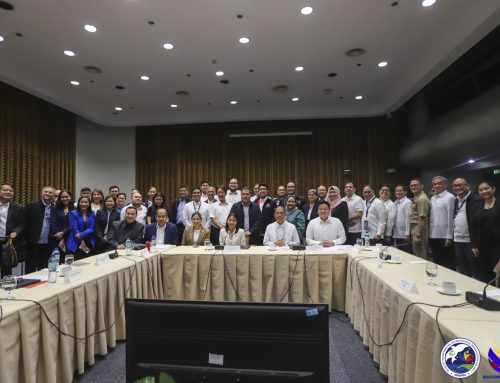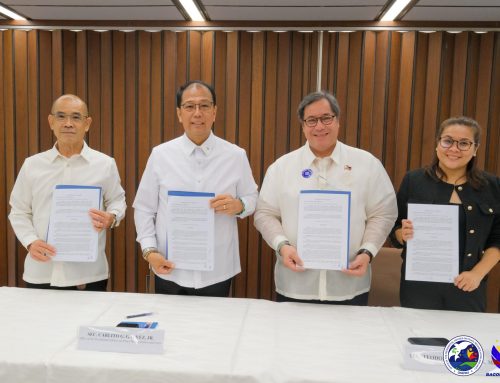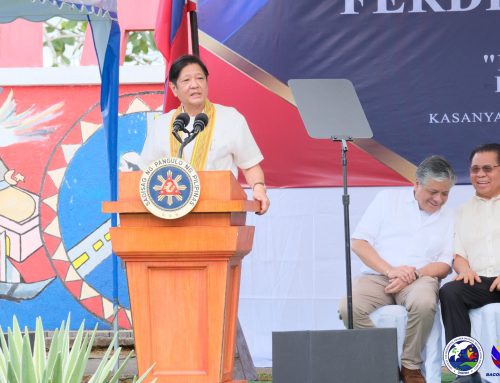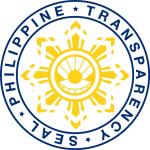PASIG CITY — The government is working aggressively to ensure that the country will have a stable supply of vaccines starting April or May and onwards to stamp out COVID-19 and achieve sustainable health security in the near future, according to COVID 19 Chief Implementer and vaccine czar Carlito G. Galvez Jr.
“We are ensuring the public that your government is aggressively negotiating and working for us to stabilize the delivery of vaccines starting this second quarter because in the first part of this year, 80% of global vaccine supplies have already been cornered by rich countries,” he said.
Galvez said the country expects to receive a total of 2,379,200 vaccine doses by March.
Of these doses, Galvez said 1.4 million doses are Sinovac vaccines. The 400,000 doses donated by the Chinese government will be delivered on March 24, while the 1 million doses procured by the government will arrive on March 28.
The government is also expecting 979,200 doses of AstraZeneca vaccines from the COVAX facility by the end of March to early April.
Another two million doses from Sinovac, and two million doses coming from Gamaleya and the COVAX facility are also expected to arrive by April.
According to Galvez, the government will explore the possibility of securing five to 10 million doses of Sputnik V. Negotiations will commence once the vaccine’s EUA has been granted by the FDA.
In the global context, developed countries such as the US will start to fully inoculate their citizens in the middle of the year, and consequently, ease the global demand for the vaccines.
“In this first quarter, it is the diplomatic capital of President Rodrigo Durterte that helped our country in securing the initial doses of the vaccines from China,” Galvez said.
He said that from May, the government is looking at gradual deliveries of vaccines of 8-million doses, then 10-million doses in June, 15-million doses in July, then 20-million doses every month until December.
Galvez said this is to realize the government’s plan to inoculate 70-million of the nation’s adult population.
These vaccines are all part of the vaccine portfolio that the government is negotiating. The initial brands include AstraZeneca, Sinovac, Novovax, SputniK V, Johnson & Johnson, Moderna and Pfizer.
Long term goal to achieve health security
Along with this effort, Galvez said the government is also working closely with international vaccine manufacturers such as the Serum Institute of India Pvt Ltd (SIIPL) to establish long-term cooperation and study the possibility for the country to produce its own vaccine.
He noted that the Philippines had that capability in 1938.
The Philippine government, which signed a supply agreement with SII for the procurement of 30 million doses of its Novavax vaccines, is working closely with the Indian vaccine company as part of the country’s health and security strategy to eliminate COVID-19 in the country.
“Maganda ang kinalabasan ng pagpunta natin sa India dahil na-secure natin ang 30 million doses ng Novavax. At mayroon po tayong possible continuing program with SII,” Galvez said who flew to India last week.
He said part of the Duterte administration’s goal is for the country to bring back its capacity to develop its own vaccines.
“Before we were the ones who were producing our vaccines and even donating it to other countries such as China. President Duterte is more inclined in his earlier statements to reactivate and revive that capability,” he said.
The Department of Science and Technology (DOST) earlier reported its plan to reactivate the pharmaceutical development unit at DOST-Industrial Technology Development Institute and establish a virology institute in the country.
Galvez said that members of the Vaccine Expert Panel will conduct exploratory talks with SII on health security, particularly on the development of a portfolio of vaccines that would completely eliminate COVID-19.
“The deal we are now exploring with SII is a fulfillment of a shared vision in ‘Bridging the Valley of Death’ by providing cost-efficient vaccines for the developing world,” he said.
According to Galvez, developing the Philippines’ own vaccine technology through its partnership with SII will allow the country to become self-sufficient in terms of vaccine production, and provide affordable vaccines as well as other medicines to its people.
Over the years, the Philippines has been exploring possible areas of cooperation with the Indian government, particularly in the fields of health and pharmaceuticals, which cover alternative and traditional medicine as well as vaccine development.
Pace of vaccine rollout
Given the country’s limited vaccine supply, the vaccine czar emphasized that the ongoing inoculation program is only a “mini rollout” intended for medical frontliners and healthcare workers.
This is in compliance with the priority framework recommended by the National Immunization Technical Advisory Group (NITAG) and the priority groups identified by the World Health Organization (WHO) for vaccine allocation.
“Ang ating vaccine rollout ay para lang sa medical frontliners. Kailangang well-calibrated at by batches ang pagbabakuna dahil minsan ay nagkakaroon ng adverse effects at para ang manning sa mga ospital ay hindi ma-disrupt,” said Galvez.
As of March 16 (11am), a total of 215,997 healthcare workers have been inoculated across the country. Meanwhile, 1,125,600 doses have been deployed nationwide including the northern tip of Luzon in Batanes, and the southernmost island provinces of Basilan, Sulu, and Tawi-Tawi.
Galvez said the government aims to complete the inoculation of the country’s 1.7 million healthcare workers by mid of April.
The immunization of senior citizens, the indigent population, and other vulnerable sectors will begin by the end of April or May.
With the arrival of more volumes, the massive vaccination of the general public will start by May or June after once the inoculation of the priority sectors identified by NITAG has been completed.
“We can increase our target [vacinees] this April with one million per week, then by May, it’ll be two million per week. By June, we will have three to five million per week. With this, we can substantially say that by the end of the year, we can inoculate 70 million Filipinos,” he added.
Containing the spread
In the meantime, Galvez said the national government will implement a series of measures in response to the spike in COVID-19 cases nationwide over the past several weeks.
He said these interventions include the imposition of an “inbound cap” that would only allow the entry of 1,500 international inbound passengers a day.
The government is also temporarily suspending the arrivals of foreign nationals and Returning Overseas Filipinos (ROFs) who are Non-Overseas Filipino Workers (Non-OFWs).
“These are among the measures that were agreed upon during the emergency meeting of the Task Force’s vaccine and response clusters. We shall be implementing these as soon as possible to contain local transmissions,” he said.
Galvez said the government has also ramped up the distribution of face masks based on the directive of President Rodrigo Duterte to ensure the health and safety of all citizens, especially the vulnerable sectors.
“We shall be distributing millions of facemasks nationwide concentrating on vulnerable affected areas. These masks are our first line of defense against the disease and must be worn at all times when outdoors,” he said.
The Vaccine Czar said the government will also be strictly enforcing minimum health standards, which include the tightening of security at COVID-19 designated quarantine hotels and ensuring the stringent observance of health protocols in business establishments.
“The AFP, the Philippine Coast Guard and the Philippine National Police will also be ramping up the conduct of security visibility patrols to make sure that everyone complies with our health guidelines,” he said. END


